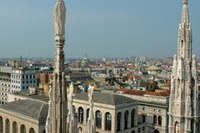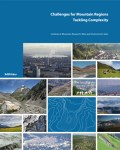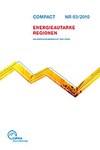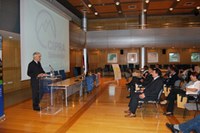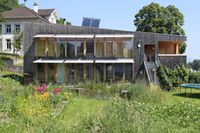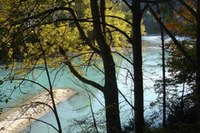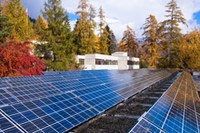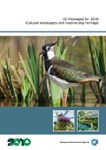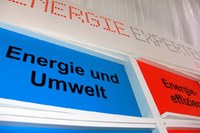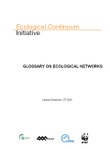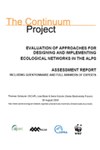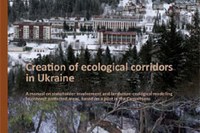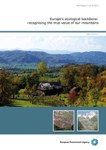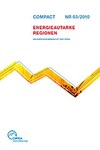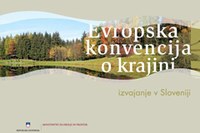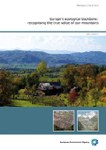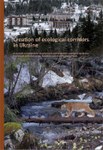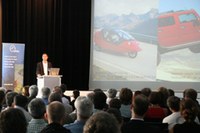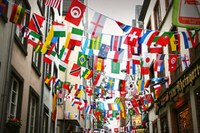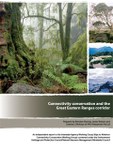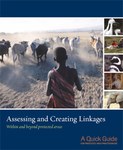Articles
ForumAlpinum 2010: proceedings now online
The 9th edition of the ForumAlpinum was held in Munich/D in early October. Titled Metropolises and "their" Alps it explored from scientific and political angles the relationship between the Alps and large cities along the Alpine Arc Further on the plenary talks and workshops focused on the relations between large cities and climate change, biodiversity, geo risks, and the European macro-region "Alpine Space". Read More…
Legal barriers and potentials for a pan-Alpine ecological network
A synthesis report from the international technical seminar in the frame of the "legal barrier" work package of Econnect, which took place on 6 May in Grenoble/F, is now available. In the focus of the seminar was the question "How can legal instruments contribute to the objectives of ecological connectivity in the Alps?". Read More…
Publication on the challenges facing mountain regions
The Institute for Mountain Research at Innsbruck University/A has published a book on man and the environment in mountain areas under the English original title Challenges for Mountain Regions - Tackling Complexity. Besides the Alps it also examines mountain areas in the Andes and Patagonia. Read More…
Wall blocks centres of six cities
In protest against the fragmentation of habitats in the Alpine space Stop – no way through! Today, 20 October 2010, a giant wall blocks the way of pedestrians in Zurich, Vienna, Munich, Ljubljana and Milan. For animals, it’s the same every day: streets and settlements increasingly fragment their migration routes. Against the background of the 10th Meeting of the Conference of the Parties of the Convention on Biodiversity, now being held in Nagoya, Japan, WWF, CIPRA, ALPARC and ISCAR (the ‘Ecological Continuum Initiative’) demonstrate with ‘The Wall’ how important interlinked habitats are for the survival of many plant and animal species. Read More…
cc.alps: CIPRA Demands – Energy self-sufficient regions
Not having to depend on energy imports: this vision holds great fascination for many regions. Self-sufficiency is “in.” There are already many very positive approaches and examples of attempts to go down this road. At the heart of all the concepts is the idea of meeting demand through regional renewable sources of energy, saving energy and using energy more efficiently. Anyone who systematically takes this approach in an attempt to create an energy self-sufficient region changes the face of their region and its structures – to the benefit of their own economy, society and the environment. Read More…
cc.alps showcases future mobility in the Alps
In September CIPRA focused on the issue of sustainable mobility and transport as part of cc.alps and co-organised two events on these topics. Read More…
climalp video: living in a plus-energy house
CIPRA's climalp project demonstrates that energy-efficient houses built using regionally sourced timber are highly beneficial when it comes to living comfort, the climate, and the regional economy. A recent video featuring the single-family home of the Götz family built in Switzerland's Rhine valley in 2004 illustrates what sustainable, climate-friendly building can look like in practice. Read More…
Power plant expansion on the Lech at the expense of nature conservation?
The Lech river in Bavaria/D is already being used on a massive scale for electricity generation, and only the stretch at Augsburg/D remains undeveloped. But even this section of the river could very soon become the site of a hydroelectric power plant. The expansion plans are not an isolated case; rather, they reflect a trend throughout the Alps, and one that is gathering momentum. Read More…
Background report on "Energy Self-sufficient Regions" now online!
The latest cc.alps background report is the compact on "Energy Self-sufficient Regions". It is dedicated to this topical, future-oriented issue and takes an in-depth look at the ambitious concept and its conflicts of objectives. Read More…
Calm and collected in a heated discussion: Pascale Poblet, CCP Project Manager "There's no stress involved in travelling by bus or by bike."
With a commuter plan that encourages the use of modes of transport other than cars the STMicroelectronics and ST-Ericsson site in Grenoble/F is committed to eco- and climate-friendly mobility. For this initiative the company was awarded one of the cc.alps competition prizes worth 10,000 euros. Pascale Poblet, CCP (Company Commuter Plan) Project Manager, explains why the company's workforce is in such great shape and why the company's kitty has benefited as a result. Read More…
CIPRA Yearly Symposium 2010: "The Alps Adapting to Change"
CIPRA's 54th Yearly Symposium was held in Semmering/A (14-16 October 2010) to the motto of "The Alps Adapting to Change - Peripheral Regions Between Wasteland and Hope". It clearly showed that decision-makers are only now beginning to perceive the problems remote areas within the Alps are faced with. Unsurprisingly there were no patent remedies to the problems these areas have to contend with - indeed the circumstances and claims to exploitation in individual regions of the Alps are far too diverse and need to be countered in just as many ways. What remains is a need for debate and action for a sustainable, future-orientated development of peripheral rural regions in the Alps. Read More…
European mountain areas: focusing on trendsetting projects
In mid-September 350 experts and interested participants from 23 countries gathered in Lillehammer/NO to discuss the implementation of innovative projects in European mountain areas. By now in the mountains of Europe there are already multiple trendsetting projects in progress. One of the conclusions reached by the experts is that a better usage needs to be made of that potential, and that it also needs to be expanded further. Read More…
Experiences from the Carpathians: a manual on creation of ecological corridors
Based on a pilot project of realizing trans-boundary ecological connectivity in the Ukrainian Carpathians a manual on stakeholder involvement and landscape-ecological modeling to connect protected areas has recently been published. Read More…
First atlas of biodiversity risk in Europe
The new "Atlas of Biodiversity Risk" is the first of its kind to describe and summarise in a comprehensive, easy-to-read and richly illustrated form the major pressures, impacts and risks of biodiversity loss on a European and global level. Read More…
The true value of our mountains
The European Environmental Agency (EEA) has just published a new report titled Europe's ecological backbone: recognising the true value of our mountains. The report provides a comprehensive analysis of population numbers, ecosystems, water cycles, land use, and policies in mountain regions. The report focuses its attention on forces and interactions between the various issues and their impact on Europe's mountain areas. Read More…
CIPRA Yearly Symposium: marginal creativity...
This year's CIPRA Symposium focuses on the socio-economic margins of the Alps. Why "margins"? Because the nearest hospital is a far away and the post office is only open in the morning; because the towns and cities are beckoning, and nature is gaining more and more ground. The prevailing process of urbanisation has little in the way of prospects to offer these mountain regions, whose potential is already low. Read More…
Photo-shooting the Alps
Time for photographers of the Alps to show off their best shots! The Permanent Secretariat of the Alpine Convention is organising a photo competition with the aim of publishing the twelve best photographs in a calendar. There will also be a special prize for each published photograph. Read More…
A milestone for alpMedia
With its current issue CIPRA's three-weekly Newsletter alpMedia is going out to more than 25'000 people throughout the Alps for the first time. CIPRA launched the alpMedia information project during the International Year of the Mountains 2002, and at that time the Newsletter was sent to just 1'700 people. Read More…
